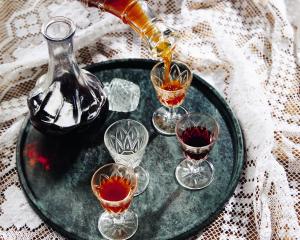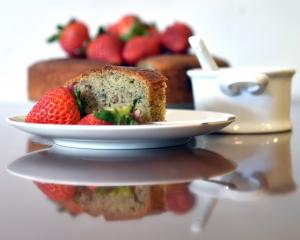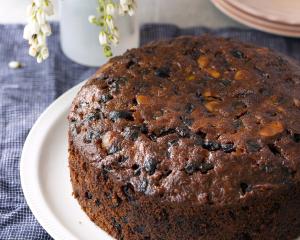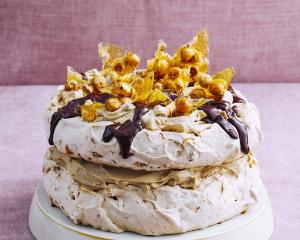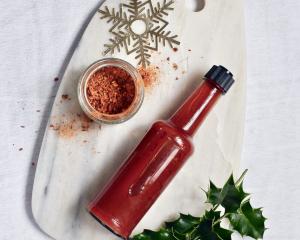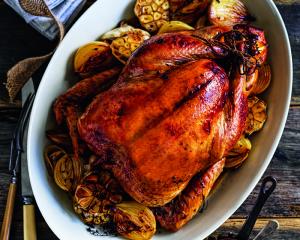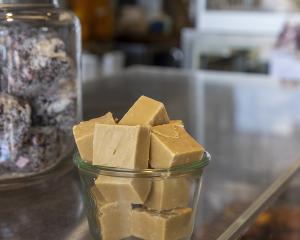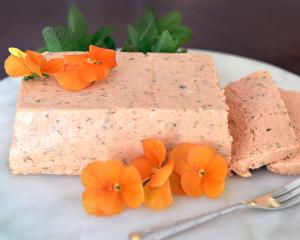

In their book Kindred Recipes, the German-born Australian sisters dedicate a chapter to the festive season. In Germany, Christmas preparations begin in early November before the first day of Advent, the fourth Sunday before Christmas.
During the Advent season German houses, streets and towns are decorated with Christmas lights, figurines, candlelight, wreaths and wooden ornaments.
Living in Australia, celebrations are different, but the family celebrated German Christmas on Christmas Eve, continuing the traditions her mother had as a child.
“The celebration of Advent and Christmas is one of the most strongly held traditions that had endured into our modern society. We hold on to it because it brings, at least, moments of delight and joy and magic and a pause to our everyday.”
THE BOOK
Kindred Recipes, spices and rituals to nourish your kin, Maria and Eva Konecsny, Pan Macmillian.

Christmas-spiced roast duck
Gebratene weihnachtsente
I used to cook duck a lot more: beautiful tender duck breasts with crispy skin, whole roast duck like this recipe or at one time, when I got into charcuterie, I even cured my own duck prosciutto, which turned out remarkably well.
It really does feel a little more special and festive to cook a roast duck, especially during the Christmas season. - Eva
SERVES 4–6
Dairy-free
2kg duck, neck and tail removed
1 lemon, quartered
5 garlic cloves, skin on and smashed
Extra-virgin olive oil, to coat
Roast duck spice
¾ tsp ground yellow mustard seeds
½ tsp ground cassia
¼ tsp ground nutmeg
¼ tsp ground allspice
⅛ tsp ground cloves
⅛ tsp ground cardamom
3 tsp sea salt flakes
Sweet & sour marinade
2 Tbsp brown sugar
2 Tbsp maple syrup
2 Tbsp apple cider vinegar
1 tsp soy sauce
1 tsp Dijon mustard
Method
Preheat the oven to 180°C fan-forced.
Wash and pat the duck dry both on the inside and out. Score a diamond pattern into the duck breast, being careful to only score the fat and not the flesh. Prick the skin with a skewer or knife tip in all other areas except the legs.
Place the lemon and garlic into the cavity, then fold the fatty bits on either side of the cavity over one another to close it. Take the legs and tie them together on the breast-side up, with kitchen string or foil.
To make the roast duck spice, combine all the ingredients in a small bowl. Generously coat the duck with oil, then rub the spice mixture over the whole duck evenly.
Place the duck, breast-side up, on a rack in a large roasting tin so the fat can drip off. Cook for 45 minutes, then turn the duck breast-side down. Cook for a further 30 minutes. During this time prepare the marinade by mixing all the ingredients together in a bowl.
When the 30 minutes are up, baste the duck with the marinade, then turn it back around with the breast facing up and baste this side too. Cook for another 40 minutes, basting once more with the remainder of the marinade halfway through the cooking time.
Rest the duck for 10 minutes before carving. Discard the lemon and garlic in the cavity before serving.
Cook’s notes
The cooking time here is for a 2kg duck and will need to be adjusted depending on the duck size. Allow 1 hour per 1kg of duck and scale the cooking time accordingly.
It’s also a good idea to strain the duck fat during the cooking process if you want to keep it for future use or to add to your gravy.
To make this recipe gluten free, use gluten-free soy sauce.

Sweet & sour red cabbage
Rotkohlgemse
In Germany, this is a traditional side dish to any roast, commonly served at Christmas-time and on Sundays for a more festive meal.
The clove, juniper and bay give it that wintry feel, and the sweet and sour combination is simply delicious. - Eva
SERVES 4–6
Gluten-free, dairy-free
1 red cabbage (about 1.5 kg)
1 onion, finely diced
60g duck fat
3 apples, peeled, cored and finely diced
7 cloves
7 juniper berries
3 dried bay leaves
5 tsp fine Himalayan pink salt
Freshly cracked black pepper
140ml apple cider vinegar
2 Tbsp white sugar
Method
Remove the outer leaves of the cabbage, then quarter the cabbage and remove the core. Shred the quarters finely with a mandoline or, as our grandmothers did, cut it by hand (3mm-5mm width is ideal).
In a large heavy-based pot, sweat the onion in the duck fat over low heat for about 5 minutes, or until translucent but not brown. Add the cabbage and 300ml of water and carefully stir (note: the volume will quickly decrease). Cover with a lid and cook for 15 minutes.
Next, add the apple, spices, bay leaves, salt and a little pepper. Make a well and pour the vinegar and sugar into the fluid that has formed in the well. Cook for 1½ hours over low heat with the lid on, stirring carefully every 20-30 minutes.
Finally, taste and season again to your liking before serving. It should have a good balance of sour, sweet and salty.
Cook’s notes
You can stud the cloves into a larger piece of onion so you can easily remove them at the end.
Replace the duck fat with butter if you prefer, or extra-virgin olive oil to make it vegan.

Pistachio & chocolate gingerbread
Pistazien gewrzkuchen mit schokolade
Luxurious yet light, this cake tastes like a European Christmas. It makes me want to curl up by the roaring fire, knitting project in hand, a tall glass of cold milk and a piece of this cake on the side table.
Made with dates and honey, it’s free from refined sugars and full of spices.
I imagine this is much closer to the original gingerbreads that the Franconian monks made with their home-grown honey and cherished spices, bringing together therapeutic ingredients in a bread that would last a long time. - Maria
SERVES 12–14
Gluten-free, vegetarian
140g (¾ cup) dried pitted dates
180g salted butter, at room temperature
250g runny honey
3 eggs
100g (1 cup) ground almonds
150g buckwheat flour
1½ tsp bicarbonate of soda
3 tsp ground cassia*
3 tsp ground coriander seeds*
2½ tsp ground star anise*
1 Tbsp ground ginger*
1 tsp ground nutmeg*
½ tsp vanilla extract
Finely grated zest of 1 orange
Finely grated zest of 1 lemon
90g dark chocolate (85% cocoa), grated
250ml (1 cup) full-cream milk
65g raw shelled pistachios
*Spice shortcuts
3 Tbsp + 1½ tsp Gewrzhaus Gingerbread Spice, plus 1 tsp ground ginger
Method
Preheat the oven to 160°C fan-forced. Line the base and side of a 25cm round springform tin.
Process the dates in a food processor for only a few seconds on high speed, until they are broken down into very small pieces, but not yet turning into a paste. Set aside.
Using electric beaters, cream the butter and honey in a large bowl, about 1½ minutes. Be careful to not over-cream as the mixture can split. Add the eggs, one at a time, beating well after each addition. Add the dates and beat in briefly.
In a separate bowl, combine the almonds, flour, bicarbonate of soda, spices, vanilla, zests and chocolate. Add a few heaped tablespoons of the dry mix to the butter mix and fold it in.
Add a dash of milk to the butter mix and fold in. Continue, alternating between the two, finishing with dry mix. Transfer the batter to the tin and smooth out the top.
Place the pistachios on a clean tea towel, then fold the tea towel over to cover them. Using the base of a jar or something similar, crush the pistachios until you have a mixture of small and large pieces, but not too small. Sprinkle the pistachios over the top of the cake batter.
Bake for 25 to 30 minutes, until a skewer inserted into the centre of the cake comes out clean. Cool in the tin before turning out on to a serving plate. Store in an airtight container in a cool spot for up to 10 days.
Cook’s notes
You can turn this into a birthday cake by pouring over a layer of chocolate ganache.
To make the ganache:
Heat 200ml of thickened cream and pour it over 100g of dark chocolate, broken into small pieces in a bowl.
Stir until the chocolate is melted, then pour over the cooled cake. Instead of topping the cake batter with pistachios before baking, sprinkle some chopped roasted pistachios over the ganache.

